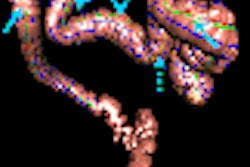The demand for CT has soared in the past decade, particularly with the advent of multislice scanners. Along with this demand, expectations for imaging's performance -- by everyone from referring clinicians to patients to administrative staff -- are higher.
But the increased interest comes with a caveat: Don't overutilize. In today's frenzied atmosphere, it's no wonder facilities want to know how they can best enhance capacity of major imaging modalities such as CT.
Dr. Giles Boland of Massachusetts General Hospital and Harvard Medical School in Boston addressed this issue in a study presented at the 2007 RSNA meeting in Chicago. Boland and his colleagues found that rather than investing in more expensive equipment, focusing on the department's staff workflow proved to be more effective in increasing CT capacity.
"The increased interest challenges us to balance controlling utilization with providing access," Boland said. "But I'd propose that buying new equipment is a relatively poor use of assets unless a facility is already at its maximum productivity and workflow capacity."
A simpler -- and more effective -- solution, according to the study findings, is to minimize CT room time by hiring more technologists.
Boland and his group identified 34 tasks that technologists performed from the time the patient was delivered to be imaged to the time images were sent to the appropriate clinician (for a list of the tasks, click here). A solitary technologist could only do these tasks sequentially; more than one could do them in parallel, thus making the whole process more efficient. The study assessed the time and capacity impact of using one, two, and three technologists, as well as the cost and revenue implications of each scenario.
The study was conducted using two outpatient multidetector-row CT (MDCT) scanners, eight- and 16-slice systems. A separate technologist timed the tasks, recorded room time, and calculated the impact of each combination on CT capacity. Two workweek models were used: one based on 55 available imaging hours per week (five days), and the other based on 99 available imaging hours per week (including evenings and Saturdays).
The group found that throughput for each technologist model (one, two, and three) on one CT scanner with a total of 205 patients scanned was as follows:
|
What's more, having two or three technologists dramatically increased the weekly and annual number of patients imaged on the 55-hours-per-week schedule. At 85% capacity:
- One technologist imaged 100 patients.
- Two technologists imaged 289.
- Three technologists imaged 355.
Annually, this translates into 5,200 patients, 15,028 patients, and 18,460 patients, respectively.
The capacity of a 99-hour-per-week schedule was even more surprising. At 85% capacity:
- One technologist imaged 174 patients.
- Two technologists imaged 501.
- Three technologists imaged 633.
Annually, this translates into 9,048 patients, 26,033 patients, and a whopping 32,916 patients, respectively -- almost double the rate of three technologists on a 55-hours-per-week imaging schedule.
How did hiring more technologists compare with buying new equipment? The study estimated a technologist's salary at about $60,000 to $70,000 (two technologists would be $120,000 to $140,000, and three would be $210,000 to $280,000). The group also took into consideration the variable costs of PACS, insurance coverage, electricity, linens, and contrast, and calculated estimated revenue based on a technical fee of $250.
The group estimated that in a "common case" scenario:
|
The bottom line? Adding more technologists produces a marked productivity increase, Boland said.
"This multiple technologist model appears to be a prudent use of expensive assets," he said. "And it allows facilities to meet patients' access expectations, as well as administrators' revenue standards."
By Kate Madden Yee
AuntMinnie.com staff writer
January 7, 2008
Related Reading
64-slice MDCT highly accurate for stenosis detection, November 5, 2007
MDCT promising for long-term prognosis in patients with chest pain, November 5, 2007
CTA predicts functional recovery of the myocardium, September 7, 2007
Coronary CTA aids some asymptomatic patients, August 27, 2007
Simple scoring system predicts cardiovascular complications after PCI, June 22, 2007
Copyright © 2008 AuntMinnie.com




















